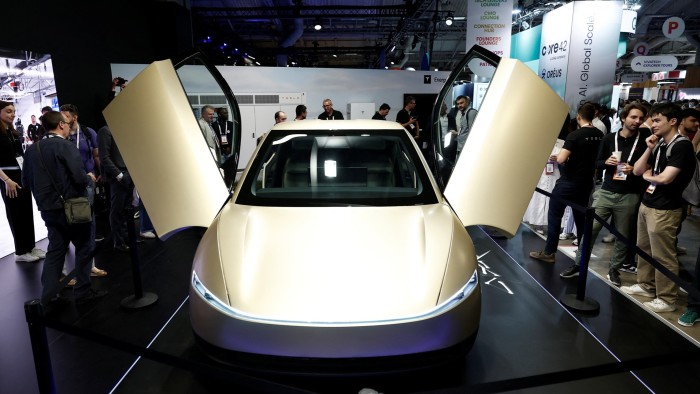Unlock the Editor’s Digest for free
Roula Khalaf, Editor of the FT, selects her favourite stories in this weekly newsletter.
For Elon Musk, tech’s great showman, this weekend’s long-awaited launch of a Tesla robotaxi service will be notably short of razzle-dazzle.
The autonomous ride-hailing service is scheduled to hit the roads in Austin, Texas, with only about 10 cars. And far from the broadly capable self-driving vehicles that Musk has long promised, the taxis will be geo-fenced to avoid the city’s most challenging intersections and come with backup teleoperators poised to intervene if problems occur.
At more than $1tn, Tesla’s stock market value leans heavily on the hope that it is about to cash in on a coming robotics revolution, starting with an Uber-like network of robotaxis. The tentative Austin debut, though years later than promised and mounted without Musk’s usual confident swagger, is at least a first step. But to say there is a lot left to prove looks like a wild understatement.
Tesla’s fans argue a number of factors will give it a much quicker path to scale and profitability than Waymo, the former Google self-driving car project that has roughly 1,500 driverless taxis in four US cities.
First is the hardware. Tesla’s technology relies only on a set of cameras mounted on its vehicles, rather than the expensive suites of radar and lidar sensors used by its rivals. Musk claims Tesla’s purpose-built Cybercab, unveiled last year, will sell for less than $30,000. Waymo, by contrast, uses Jaguars that have a list price of more than $70,000, then packs its vehicles with sensors that add tens of thousands of dollars more.
Notably, though, Tesla has yet to demonstrate that its camera-based systems can operate at the near-autonomous level, known as L4, that Waymo has achieved. It does not reveal how often drivers intervened to take back control of its cars when they were operating autonomously during testing.
It is also facing regulatory investigations in the US over whether its self-driving software has caused a number of accidents. For Musk, there is still a huge gulf between putting a handful of cars on a limited range of roads with teleoperators and demonstrating that Tesla is ready to operate a truly autonomous service.
A second potential advantage is that Tesla will have access to the fleet of cars its customers have purchased over the years, all of which might theoretically be released to work part-time in its robotaxi network. That could give it an instant time-to-market and business model advantage, removing the need to own and operate its own fleet.
However, it is not clear whether, when Tesla finally delivers a version of its full self-driving system that lives up to the name, the software will actually work on all the vehicles it has sold in the past. Nor is it obvious how many Tesla owners will want to send their cars out to work a shift on the robotaxi network. Waymo runs charging and maintenance centres to support its fleet: for individual Tesla owners, the costs and hassle of cleaning, maintaining and insuring their vehicles would be a disincentive.
Others are also likely to match its asset-lite approach to robotaxis. Waymo recently announced an alliance with Toyota, the first partnership with a carmaker that points towards a software-centric business model in which Waymo would serve only as tech supplier.
Musk’s third claimed advantage lies in the speed at which his company will be able to roll out its service. Armed with a mass of driving data, collected from all the cars it has sold, it will not need the painstaking city-by-city mapping Waymo undertakes before entering a new market: like a human driver, its software will be smart enough to be released “in the wild”.
In practice, the technical and regulatory process is unlikely to be anything like as smooth as this suggests. The true advantage Tesla will get from its trove of driving data is hard to assess: It does not come from vehicles operating autonomously, and may not give it much of an advantage when it comes to studying the rare “edge cases” that make full autonomy difficult to achieve.
Nor is the company likely to get an easy ride from regulators. It makes sense to start in the company’s home town, in a state with a permissive Republican governor, but other states — particularly those with Democratic governors — are likely to impose more stringent rules.
Musk has predicted Tesla’s network could grow to 1,000 robotaxis “in a few months”, setting up the company’s rapid expansion into other cities. After all the promises, his robotaxi hopes are finally about to experience a clash with reality.
Read the full article here




